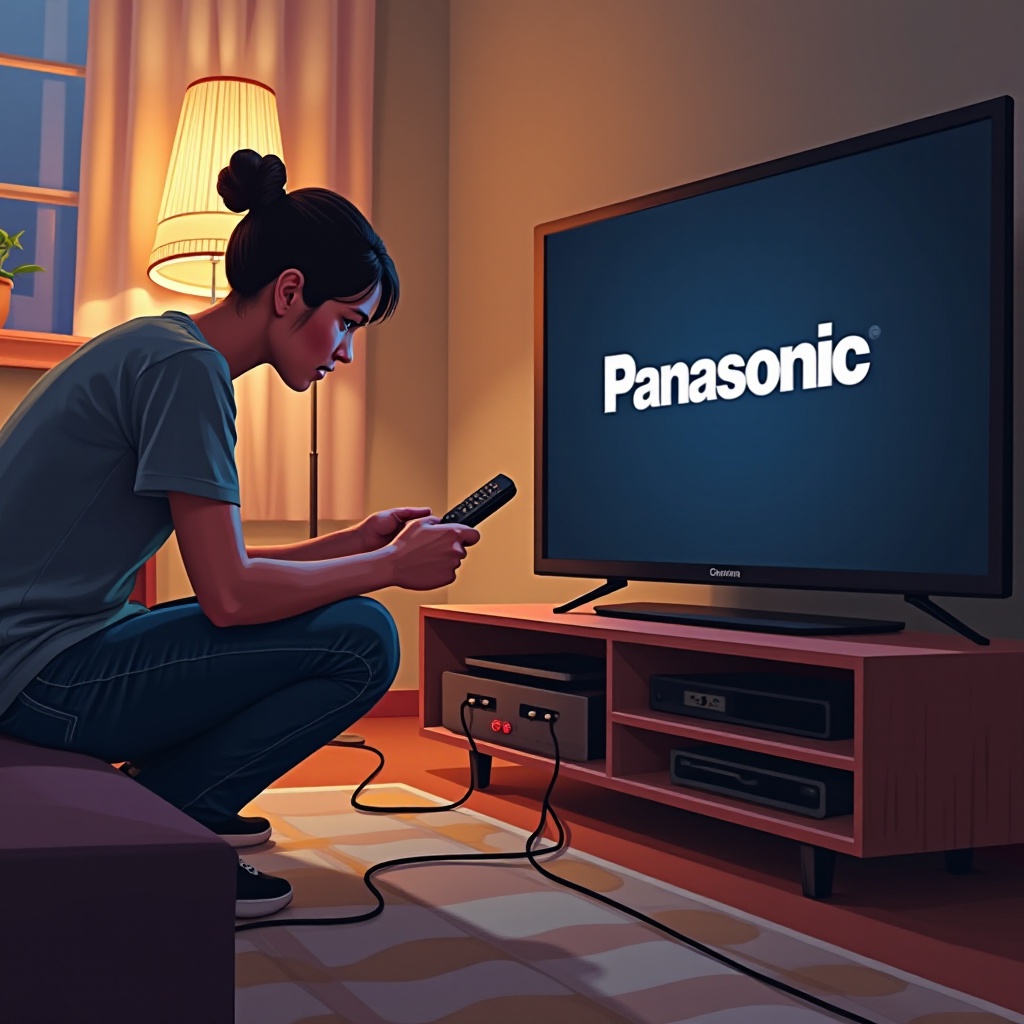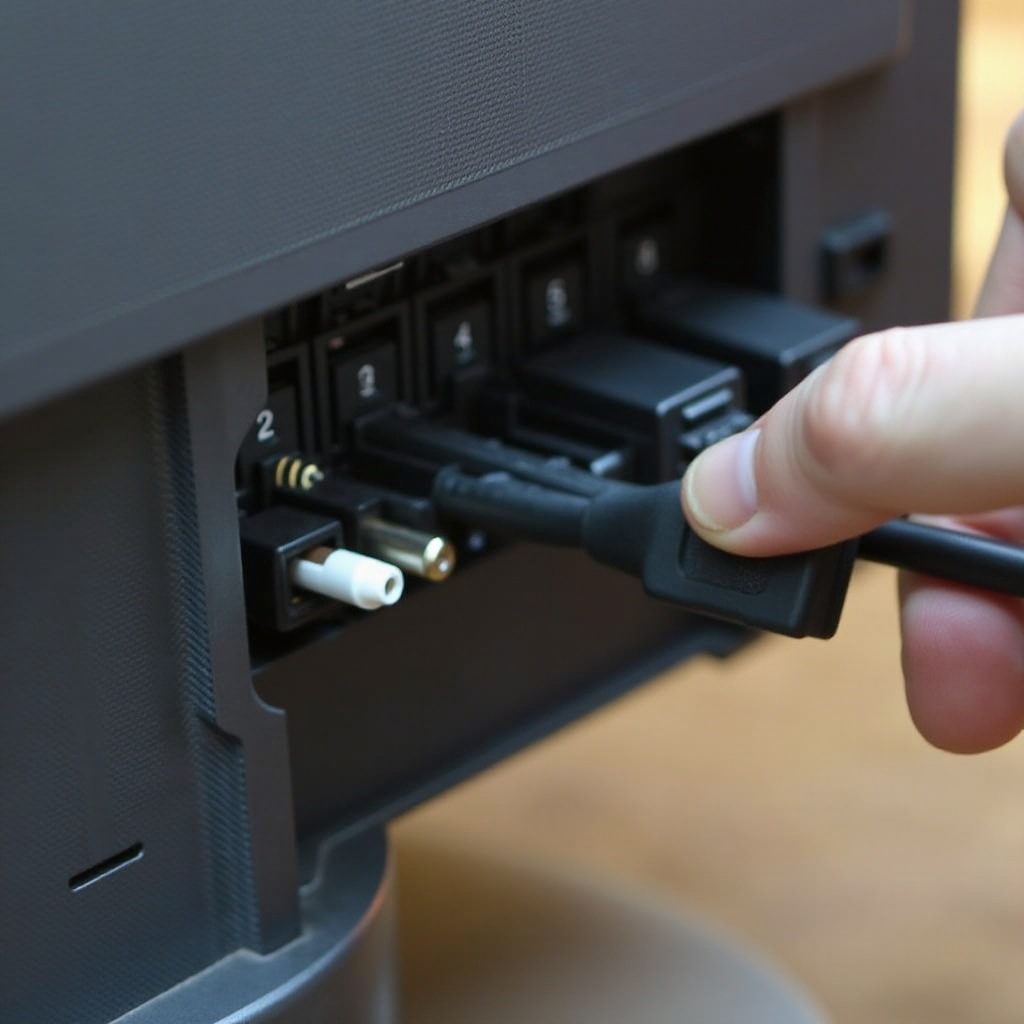
Introduction
Experiencing a Panasonic TV that won’t switch on can be frustrating, especially when you’re in the mood to unwind with your favorite shows. But before exploring expensive repair options or contemplating replacements, try some basic troubleshooting steps on your own. Whether it’s a simple connection issue or something more intricate, this guide will provide you with the necessary steps to potentially resolve the problem with your Panasonic TV.
Initial Troubleshooting Steps
Begin with these elementary yet often effective troubleshooting steps. They might seem straightforward, but addressing them can frequently resolve the issue without needing professional help.
Check the Power Source
- Verify the outlet: Test the power outlet by plugging in another device to ensure it’s working.
- Surge protector: If connected to a power strip or surge protector, plug the TV directly into the wall outlet instead.
- Outlet reset: If the outlet includes a circuit breaker, reset it by pressing the built-in reset button.
Inspect the Remote Control
- Battery check: Replace depleted batteries in the remote, as this might prevent it from sending proper signals.
- Remote functionality: Test the remote with another Panasonic device, if it’s available.
- Manual operation: Attempt to switch on the TV manually using the power button on the unit itself to rule out remote issues.
If these steps do not resolve the issue, the problem may reside deeper within the device’s hardware or software.

Examine Hardware Connections
If power sources and remote control issues are not the culprit, examining the hardware connections could provide answers. Ensuring robust electricity and signal flow to your TV is essential.
Power Cord Inspection
- Visual inspection: Look for signs of damage, such as frays or cuts on the power cord.
- Secure connection: Check that the power cord is firmly connected at both the TV and outlet ends.
- Replacement test: If possible, test with another compatible power cord to determine if the cord is faulty.
TV Power Button Functionality
- Operational check: Use the power button on the TV unit; if it works, the remote may be faulty.
- Sticky button: Confirm that the power button isn’t stuck or jammed.
- LED indicator: Observe if the standby light blinks upon switching on, as this might indicate specific error codes.
If these inspections don’t reveal problems, it’s time to investigate the device’s software components and internal settings.

Addressing Software and Internal Issues
When hardware checks don’t point to a fault, a glitch in the TV’s internal software might be the issue. Performing simple resets and updates could clear such issues.
Performing a Soft Reset
- Unplugging TV: Disconnect the TV from its power source.
- Discharge power: Hold down the power button for approximately 30 seconds.
- Reconnect and power on: Plug the TV back in and try turning it on again.
Update Firmware
- Firmware version: Visit Panasonic’s official website to find the latest firmware for your model.
- USB update: Download this update onto a USB flash drive and plug it into the TV’s USB port.
- Follow instructions: Turn on the TV and follow the on-screen instructions to complete the update.
Keeping firmware updated can resolve many software-related issues, boosting the TV’s overall performance.
Advanced Troubleshooting Techniques
If neither basic nor intermediate methods have worked, it might be wise to attempt advanced techniques that involve checking alternative power sources and connections.
Test with an Alternative Power Cable
- Compatible cable: Use a power cable from a different device to check for improvements.
- Assess the fit: Ensure the replacement cable fits the socket snugly without any force.
Utilizing a UPS
- Connect to UPS: Link your TV to a UPS to stabilize the power input.
- Voltage check: A UPS can reveal if power fluctuations are preventing the TV from turning on.
- Power cycle: Use the consistent power from the UPS to try power cycling your TV.
These advanced techniques can help uncover issues with inconsistent power or faulty cables.
When to Seek Professional Assistance
If efforts up to this point haven’t succeeded in turning on your Panasonic TV, it’s advisable to consult a professional to prevent further complications or damage.
Contacting Panasonic Support
- Warranty check: Review your TV’s warranty status.
- Official support: Reach out to Panasonic’s customer service for additional guidance.
- Recorded issues: Share a detailed account of the issues encountered and steps taken for a quicker diagnosis.
Warranty and Repair Options
- Service center: Visit a certified Panasonic service center for a thorough examination and repairs.
- Repair estimates: Obtain and compare repair cost estimates against replacement expenses, if necessary.
- Extended warranty: Consider an extended warranty for ongoing issues
Professional assistance guarantees efficient repairs, ultimately safeguarding the device.
Conclusion
Addressing a Panasonic TV that won’t power on takes patience and structured troubleshooting. Begin by examining power sources and the remote, then move on to hardware and software before attempting advanced techniques. Following this comprehensive guide, you can save both time and money. Recognize when seeking professional help is prudent to avoid additional problems or costs. By adhering to these guidelines, you’re increasing the likelihood of bringing your TV back to life.
Frequently Asked Questions
Why does my Panasonic TV keep turning off after I turn it on?
Potential causes include a sleep timer setting, overheating, or a power supply issue. Ensure all settings are correct, and ensure the TV has sufficient ventilation.
Can a power surge cause my Panasonic TV to stop working?
Yes, power surges can damage internal components. Employing a surge protector can shield your TV from such incidents.
How do I reset my Panasonic TV if it won’t turn on?
If the TV is unresponsive, perform a soft reset by unplugging it, pressing the power button for 30 seconds, then reconnect it to the power source.
